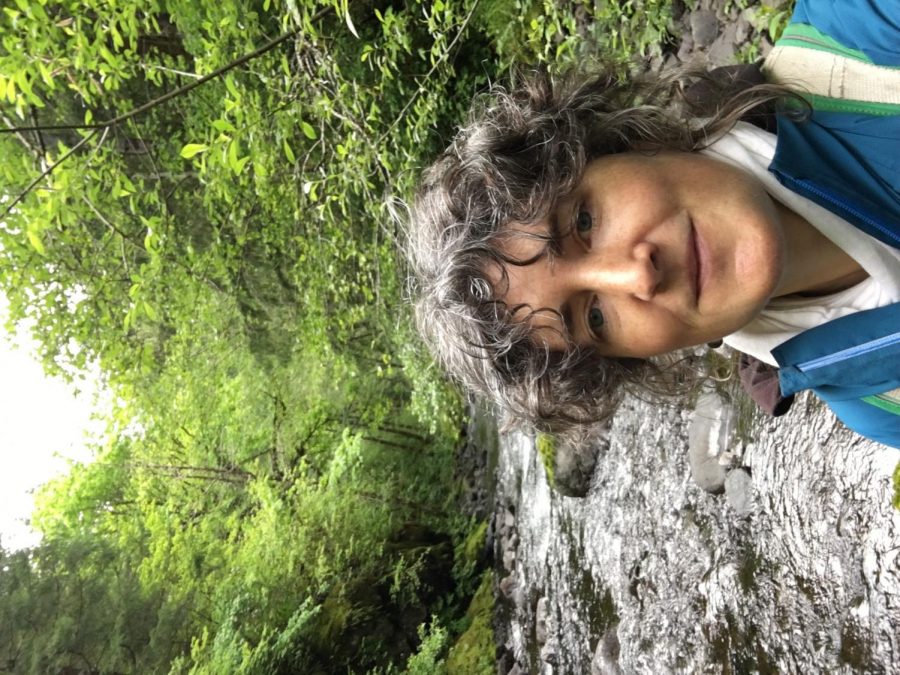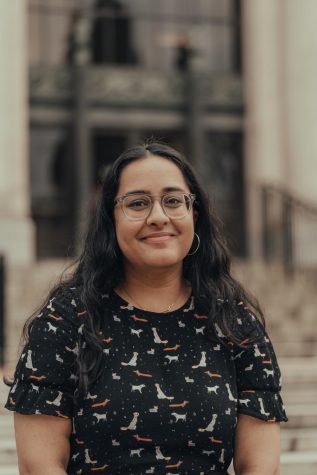Petition aims to direct OSU’s work under national grant towards true nuclear safety
November 11, 2020
Oregon Physicians for Social Responsibility has created a petition urging Oregon State University leaders to work towards real nuclear safety.
OSU was awarded a $4.3 million grant awarded from the National Nuclear Security Administration. On Oct. 24, the UN Treaty on the Prohibition of Nuclear Weapons was ratified by its 50th state, Honduras, and will become legally binding on all nations that have signed the treaty in 90 days. This is considered a win for anti-nuclear activists but opposed by the United States and other major nuclear powers.
Kelly Campbell is the executive director at Oregon Physicians for Social Responsibility, a statewide non-profit organization that works with health professionals and advocates on the greatest threats to human health and survival.
Campbell, who helped organize the petition, said the NNSA grant gives OSU a great opportunity to provide leadership and model what nuclear safety could look like.
“Basically, as long as we have nuclear weapons on the planet, it’s only a matter of time before they get used; whether it’s accidentally, or on purpose, or some sort of a mistake or sabotage,” Campbell explained. “Any responsible scientist will tell you, there’s no way to have a 100% safety for nuclear weapons, and the fact that they’re so destructive—we have enough nuclear weapons to blow up the world many times over, right now.”
Eventually, Campbell said, these nuclear weapons will get used because they are out there, so the only responsible way to provide nuclear safety and security is to dismantle the nuclear stockpile.
Trisha Pritikin, president of the Board of Directors for Consequences of Radiation Exposure, a Washington state non-profit dedicated to increasing public awareness of the human health impacts of exposure to fallout from atmospheric and underground nuclear weapons tests.
CORE sent a letter on Oct. 27 to OSU leadership asking specifically for OSU’s work under the grant to develop a simulation focused on the process leading to the complete dismantling of the U.S. nuclear arsenal.
Pritikin said with the ratification of TPNW, the role of OSU in supporting the dismantlement and disposal of nuclear weapons becomes even more timely.
“In its new grant involving development of computer simulations, which allow the continued assessment of the viability of the US nuclear weapons stockpile, one of the crucial simulations developed must involve the mapping of steps towards dismantling of the US nuclear stockpile, supporting the intent of the TPNW,” Pritikin said.
Computer simulations allow us to avoid the restart of nuclear testing that the Trump administration has been discussing as of late, Pritikin added.
Todd Palmer, a professor with the School of Nuclear Science and Engineering at OSU and the director of CEMeNT, will work with OSU’s Center for Exascale Monte Carlo Neutron Transport and use the NNSA grant to lead OSU researchers in studying nuclear engineering.
The challenging topic of performing detailed simulations of evolving neutron distributions in fusion and fission systems is the focus of CEMeNT.
“CEMeNT will develop algorithms, software and human capital to support the nation’s Stockpile Stewardship Program, an ambitious effort to improve the science and technology for assessing an aging nuclear weapons stockpile without relying on nuclear testing,” Palmer said.
Human capital is defined as the economic value of a person’s work experience and skills, which can cause a hierarchical ranking of employees.
Palmer noted that none of their research will involve testing or even modeling nuclear weapons.
“Our primary modeling demonstrations will be on fast burst fission reactors, and we will be solving problems using and comparing with data from the open literature,” Palmer said. “As for the question of ‘dismantling the nuclear stockpile’, I think you’ll find that there are people in the world who believe that the deterrence provided by the existence of nuclear weapons has led to increased stability in the world, and an absence of world wars.”
Pritikin explained what exactly makes nuclear weapons dangerous.
“Beyond the obvious lethal harm caused by nuclear weapons deployed in Japan in Aug. of 1945, radioactive fallout was covertly released during wartime and the Cold War era from US nuclear weapons production and testing sites,” Pritikin said. “Fallout exposures have been known to result, decades later, in cancers and other serious disease[s] identified as radiogenic – caused by radiation exposure.”
Pritikin noted that many communities were not aware they were exposed to radioactive fallout since the U.S. did not disclose this information until decades later. She listed just a few situations where populations were exposed to radioactive fallout from U.S. nuclear weapons production and testing activities.
“Nuclear weapons production requires uranium, and those involved in uranium mining, milling and transport have unknowingly inhaled radon and uranium dust, as did their families,” Pritikin said.
She also said radioactive waste from nuclear weapons production sites throughout the country exposed populations living downstream to radioactivity released from leaking and deteriorating storage drums. Additionally, Pritikin said we still don’t know the extent of the genetic effects to future generations of children born to people exposed to these radioactive sources.
Linda Richards, a professor with the history department at OSU who contributed to the petition, said the NNSA grant hypothetically already has a connection with disarmament as some of the NNSA’s most important work is a result of treaties made to reduce nuclear weapons.
“We want everyone, especially people in positions of power, to think of creative ways to divest from nuclear weapons as a national threatening worldwide system of abuse,” Richards said. “The 2017 Treaty on the Prohibition of Nuclear Weapons will go into force soon, we want the USA to once again be in line with their previous treaties and commitments to be a leader in disarmament.”
For Richards, the issue of nuclear safety is urgent.
“We don’t have long to save the earth,” Richards said. “The late Shoshone elder Corbin Harney, who helped to end underground nuclear weapons tests with his leadership, told me in 1986 that when the big winds came it may be too late. Looking out my window at the red sky with whipping winds swirling in ways I had never seen—not even in dust storms—during the fires this summer in southern Oregon shook me to my core. We even had a hint of what a nuclear winter might be like when the smoke blocked the sun for a few days. We must respond and make these changes now for future generations and expand our thinking to find new solutions.”

























































































































